Throughout history, humans have needed spaces to meet their shelter needs in the geography where they lived. However, humans have added different gains to spaces and transformed them into functional structures that take shelter beyond their needs.
With this transformation, spaces gained different functions, people began to live together in settled life, and the first cities emerged. Around 10,000 BC, with the Neolithic Period, humanity transitioned from a hunter-gatherer lifestyle to a settled life based on agriculture. Settled life pushed humanity toward a spatial orientation, and the production resulting from agriculture and animal husbandry played a significant role in the change and transformation of space. Thus, the first cities of human civilization began to be established.
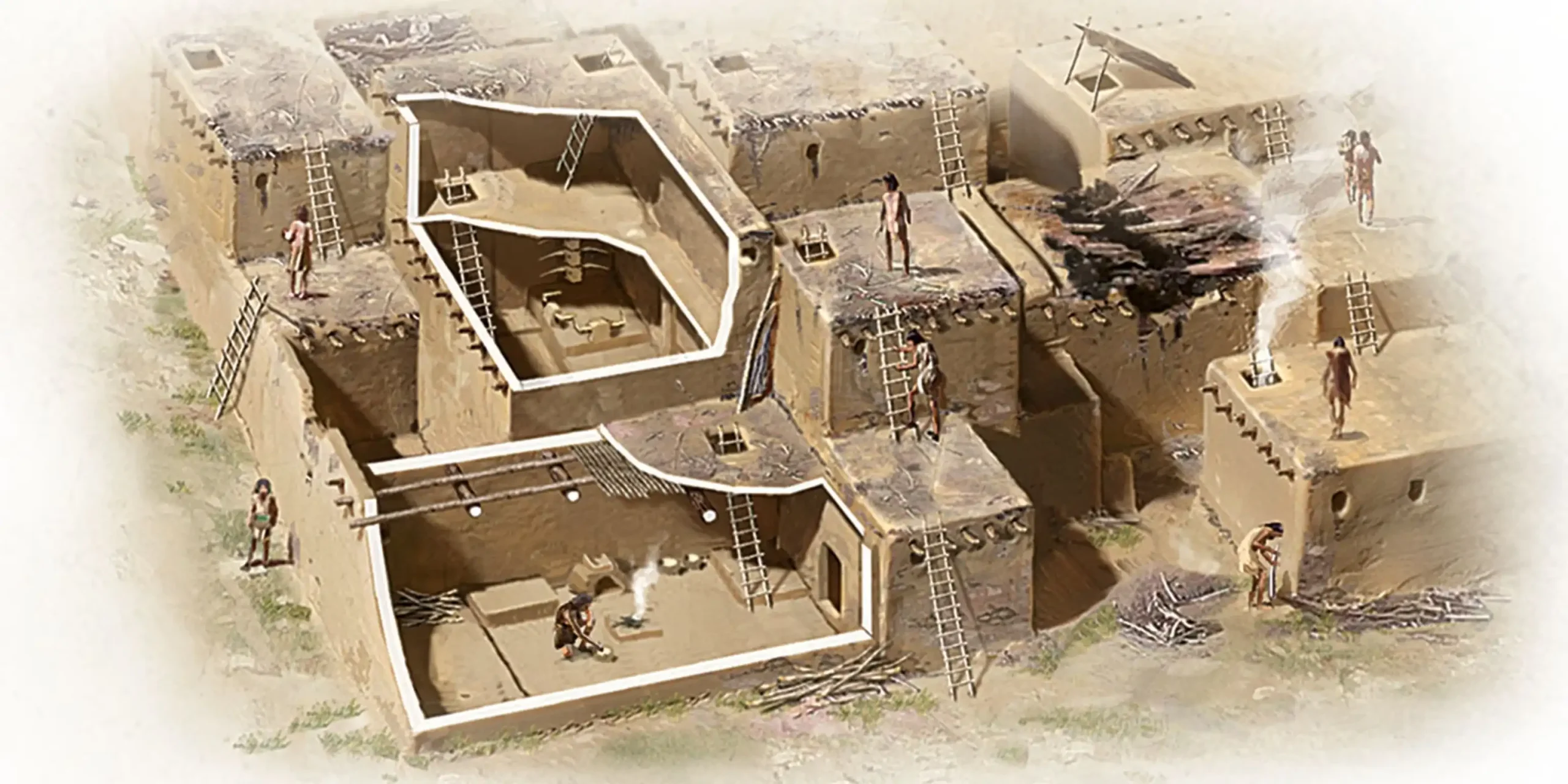
As a result of humanity transitioning to a settled life and discovering agriculture 2.5 million years ago, humans’ ability to dominate nature increased. Humanity, which began to establish social rules instead of the rules of nature, laid the foundations of urbanization. This process, which began with the agricultural revolution, continued with the urbanization revolution, and a new human society emerged.
With the emergence of cities, which were the final stage reached by civilization, many functions that were scattered and unorganized until then were brought together in a limited area. By considering the geographical and social conditions, humanity settled and established the foundations of modern cities with the first cities they built.
Here are the 10 oldest cities where human civilizations settled:
Göbekli Tepe
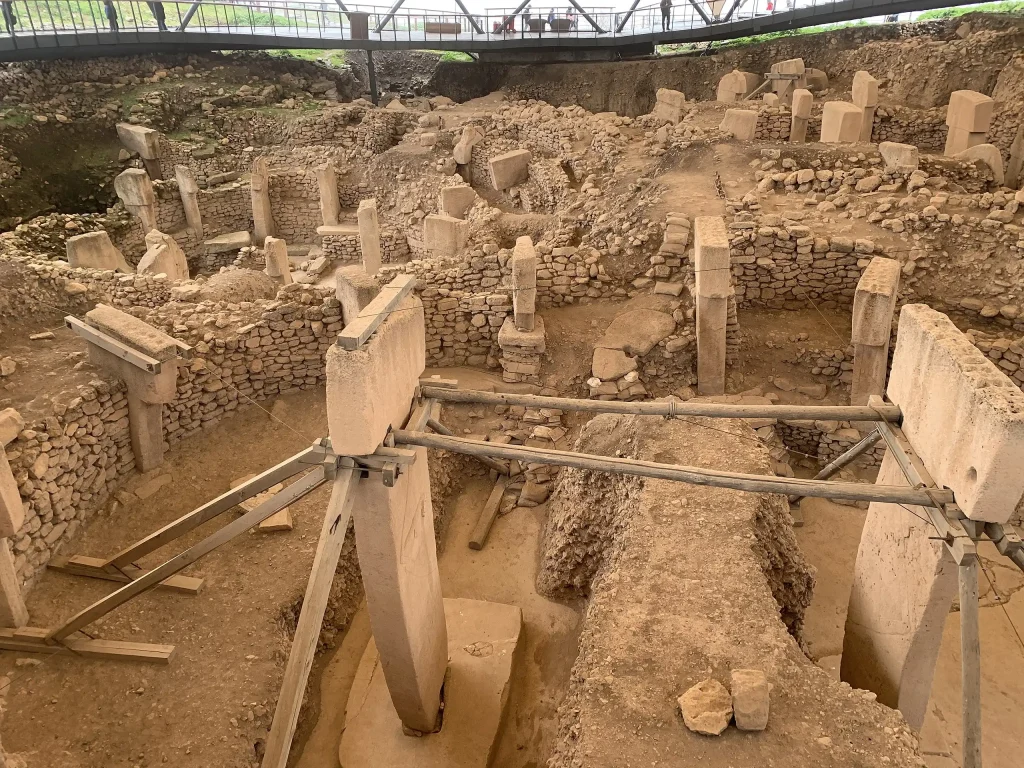
Göbekli Tepe, located near Şanlıurfa in Turkey, is considered the world’s oldest known temple complex, dating back to around 9600-9500 BC. A religious center from the Pre-Pottery Neolithic Period, Göbekli Tepe was built on a mound of limestone cliffs that is approximately 200-300 meters high. It takes its name from this mound rising from a flat limestone plateau that resembles a navel.
Göbekli Tepe, first discovered by Klaus Schmidt in 1994, shows that contrary to previous beliefs, hunter-gatherer societies built large monumental structures before fully transitioning to agriculture and animal husbandry. Some experts argue that Göbekli Tepe was primarily used for various religious ceremonies and festivals, and after these rituals, people would leave the site for months. The architecture of Göbekli Tepe includes large stone structures called megalithic structures. Consisting of 10-12 T-shaped obelisks located in circular structures with diameters ranging from 10-30 meters, Göbekli Tepe has two obelisks placed opposite each other, higher than the others, in its center.
The columns, reflecting the stonemasonry skills of the period in which they were built, are decorated with various symbols and figures and carry symbolic meanings. The temples discovered at the site are classified into three types. The Rectangular Planned Temples were used for the community’s religious rituals, serving as functional spaces. The Circular Planned Temples, which have a central courtyard, were places for activities such as dance, music, and religious ceremonies. Finally, the Twin Temples, consisting of two separate sections symmetrically placed, served as spaces for different religious communities or special groups to perform their rituals.
Archaeological work continues at Göbekli Tepe, which was included in the UNESCO World Heritage List in 2018. Today, this area, which is open to visitors, is covered with a membrane roof supported by steel carriers. As archaeological excavations are still ongoing, the roof was designed to be modular and removable, protecting the site from climate conditions and external factors while providing a suitable environment for visitors to explore the excavation area.
Çatalhöyük
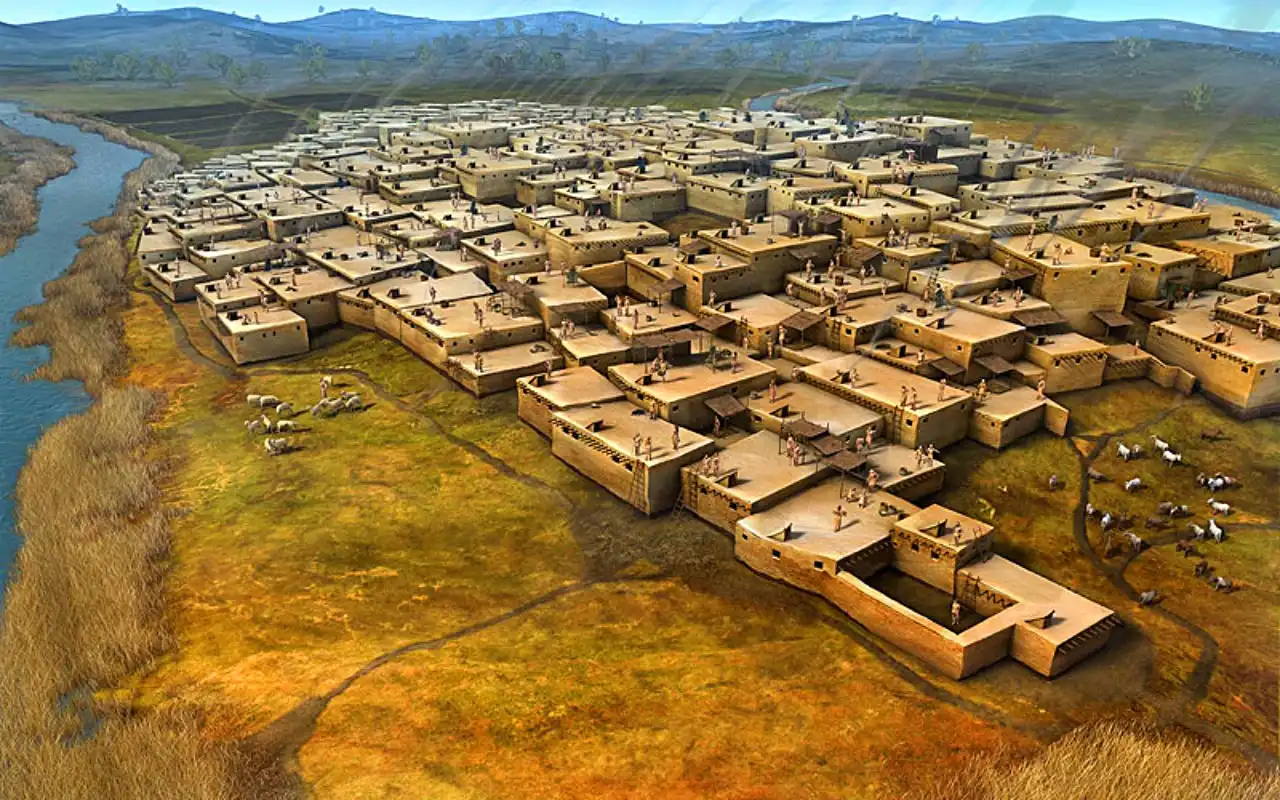
The oldest permanent settlement discovered, Çatalhöyük, is in Turkey’s Konya plains. Estimated to have been founded around 9,000 years ago during the Neolithic Age, Çatalhöyük represents an example of planned urbanization and is believed to have housed around 10,000 people. Famous for its complex structures, weaving, ceramic production, and wall paintings, this settlement represents the beginning of settled life based on agriculture and is an important source for studying the evolution of social structure.
The houses built with adobe in Çatalhöyük are gradual and continuous. Constructed in a roughly rectangular shape and so closely packed that there were no streets between them, people moved around on the rooftops and entered their homes through an opening in the ceiling. While the houses varied in size and shape, they generally followed a common layout. Each central room contained a hearth beneath a ladder, while slightly elevated platforms inside the rooms were used for sleeping. Beneath these platforms, the bodies of deceased individuals were buried. The white-plastered walls and floors of Çatalhöyük feature intricate and detailed paintings depicting hunting scenes and geometric patterns.
When a family’s life span ended, the house was filled with soil, and a new one was built on top, thus forming a mound that is 21 meters high today. Added to the UNESCO World Heritage List in 2012, Çatalhöyük has revealed 18 building layers and archaeological excavations continue to this day.
Jericho
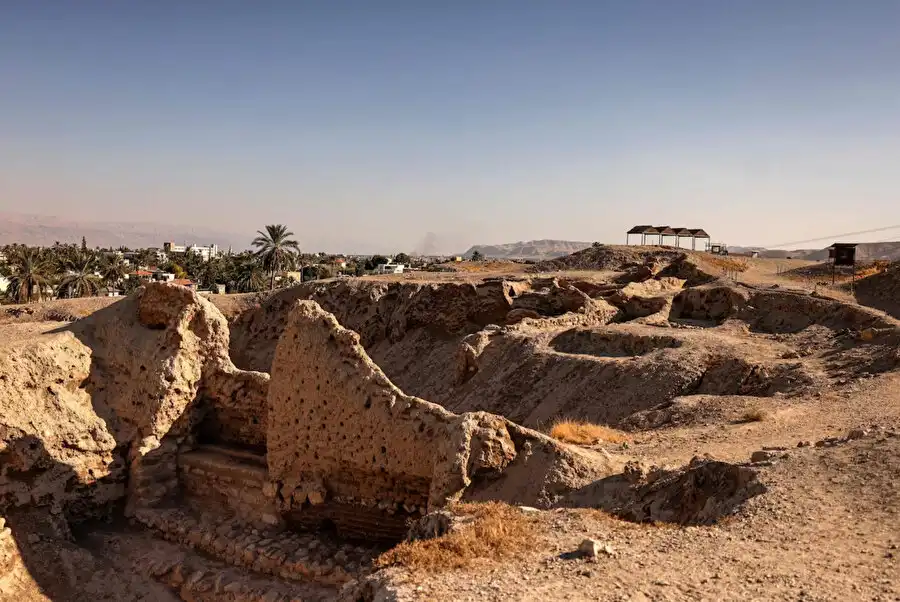
Jericho, located in the West Bank of the Palestinian National Authority, near the Jordan River, is one of the oldest settlements in the world. Dating back to 9000 BC, the city provides evidence of the first development of permanent settlements and, therefore, the first steps towards civilization. Located 258 meters below sea level in the Jordan Valley, the city is the lowest-lying settlement in the world. Its fertile lands, abundant water sources, and warm climate have attracted people for thousands of years, making it a continuous settlement throughout history. The first excavations in Jericho began in 1868 under the guidance of Charles Warren, focusing on the mound known as Tell es-Sultan. Ongoing excavations have led archaeologists to uncover more than 20 different settlement layers, dating back as far as 11,000 years.
Jericho, which is popular with humanity because it is a city mentioned in holy books such as the Torah and the Bible, has been discovered with stone walls and towers that are thought to be the oldest in the world. The existence of large walls proves that Jericho was built to protect against attacks from neighboring kingdoms and nomads in the region. Continuously inhabited for thousands of years, Jericho is one of the first walled cities in history and has hosted many civilizations. In 2008, it was recognized by UNESCO as one of the “Oldest Cities in the World” and placed under protection.
Ain Ghazal
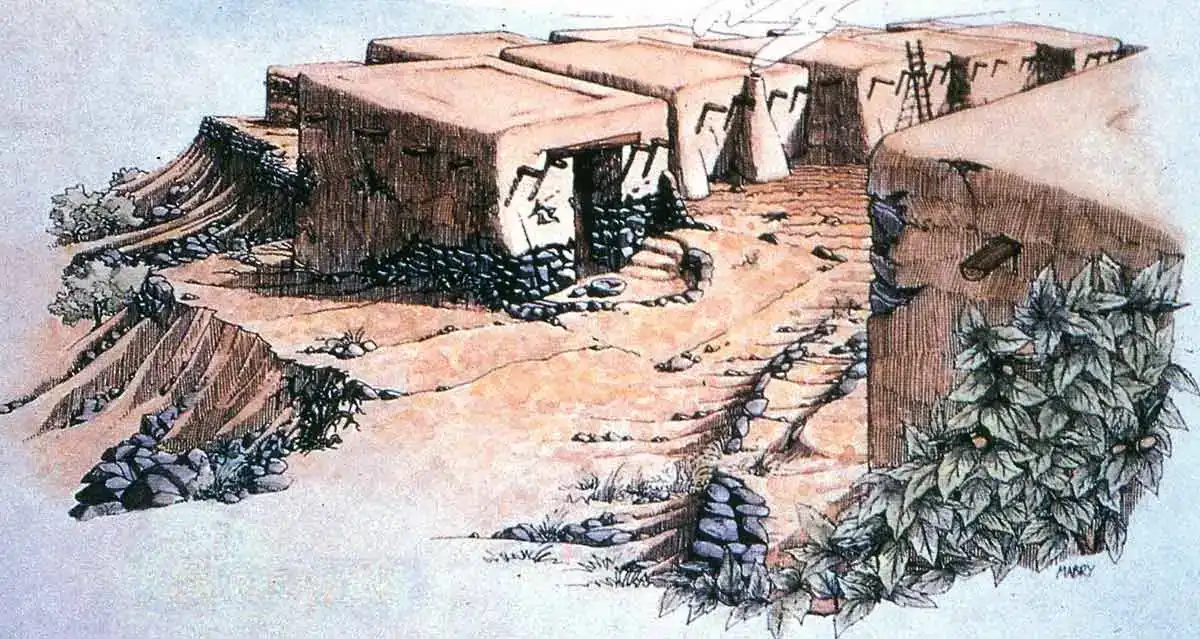
Located northeast of present-day Amman in Jordan, Ain Ghazal is one of the oldest settlements in human civilization. Founded around 7250 BC, the city is a Neolithic settlement and one of the most advanced examples of early agricultural communities. Situated near the Zarqa River, Ain Ghazal was built on an elevated area offering views of the surrounding landscape, where two ecosystems converged. Despite having a population of around 3,000 people, it was four times larger than its contemporary, Jericho.
The city’s construction followed the Levantine Natufian culture. The mudbrick houses were designed with a main room and a small entrance hall, with exterior walls coated in mud and interiors plastered with lime. The people of Ain Ghazal regularly replastered their walls every few years. The dead were buried beneath the floors of houses, and after the flesh had decayed, the skulls were removed and decorated. Public buildings and gathering spaces for religious rituals were also constructed in the city.
A notable aspect of Ain Ghazal’s culture is the prevalence of ceramic figurines. Both animal and human sculptures were made using clay. A total of 195 figurines have been discovered so far, with human figures being the most famous. Made from limestone and plaster, these sculptures had eyes decorated with seashells. Excavations at Ain Ghazal began in 1982 under the direction of American archaeologist Gary O. Rollefson, uncovering numerous artifacts from the period.
Cities of The Sumerian State: Eridu, Uruk, and Ur
Eridu, Uruk, and Ur, which formed the foundation of Sumerian civilization, are among the oldest cities of Mesopotamia. In Sumer, villages transformed into cities, leading to the emergence of Sumerian city-states. The Sumerians used local construction materials, and due to the scarcity of stone in the region, they primarily built their temples, columns, and palaces using mudbrick. One of the common features of all the cities established is the main temple built on raised platforms known as ziggurats.
Eridu

Eridu considered the oldest city of Sumer, was also the southernmost city and covered a mound known today as Tell Abu Shahrain in present-day Iraq. According to legend, Eridu was founded by Enki, the god of water, craft, knowledge, and creation, and it is described as the place where civilization was introduced to humanity. Eridu thought to have been founded around 5400 BC and to be the first settlement in the region, was excavated in 1855 by an expedition led by George Taylor.
The city was built outward from its center, where the E-Abzu, the temple of Enki, was located. A giant ziggurat (a pyramid-like temple representing the Mesopotamian culture) emerged in Eridu, where successive temples were built. After being used as a settlement for 5,000 years, it was completely abandoned in 600 BC due to the loss of fertility of the land.
Uruk
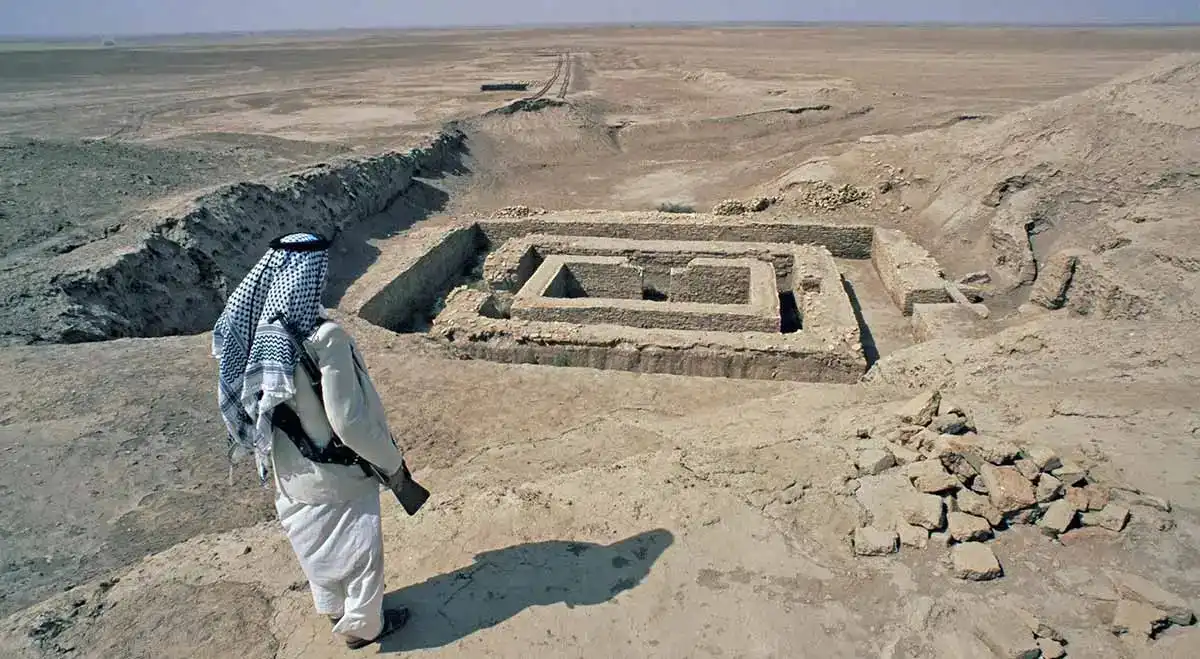
Another Sumerian city, Uruk, was founded around 5000 BC in the Warka region of present-day Iraq. Known as the first great city-state, Uruk reached a peak population of up to 90,000 people, making it one of the most densely populated centers of early human settlement. Situated along a crucial trade route of its time, Uruk was also the birthplace of the first known writing system.
The ziggurats, which were used as both a religious and political building in Uruk, were famous. As a result of the excavations that began in 1850 with the British archaeologist William Loftus, the Temple of Ishtar, one of at least four large temples in the city of Uruk, was discovered. Uruk, the most important city of Mesopotamia, began to decline around 2500 BC, and although it experienced ups and downs over the years, it never regained its former glory and was abandoned during the Muslim conquests of the region in 630 AD.
Ur
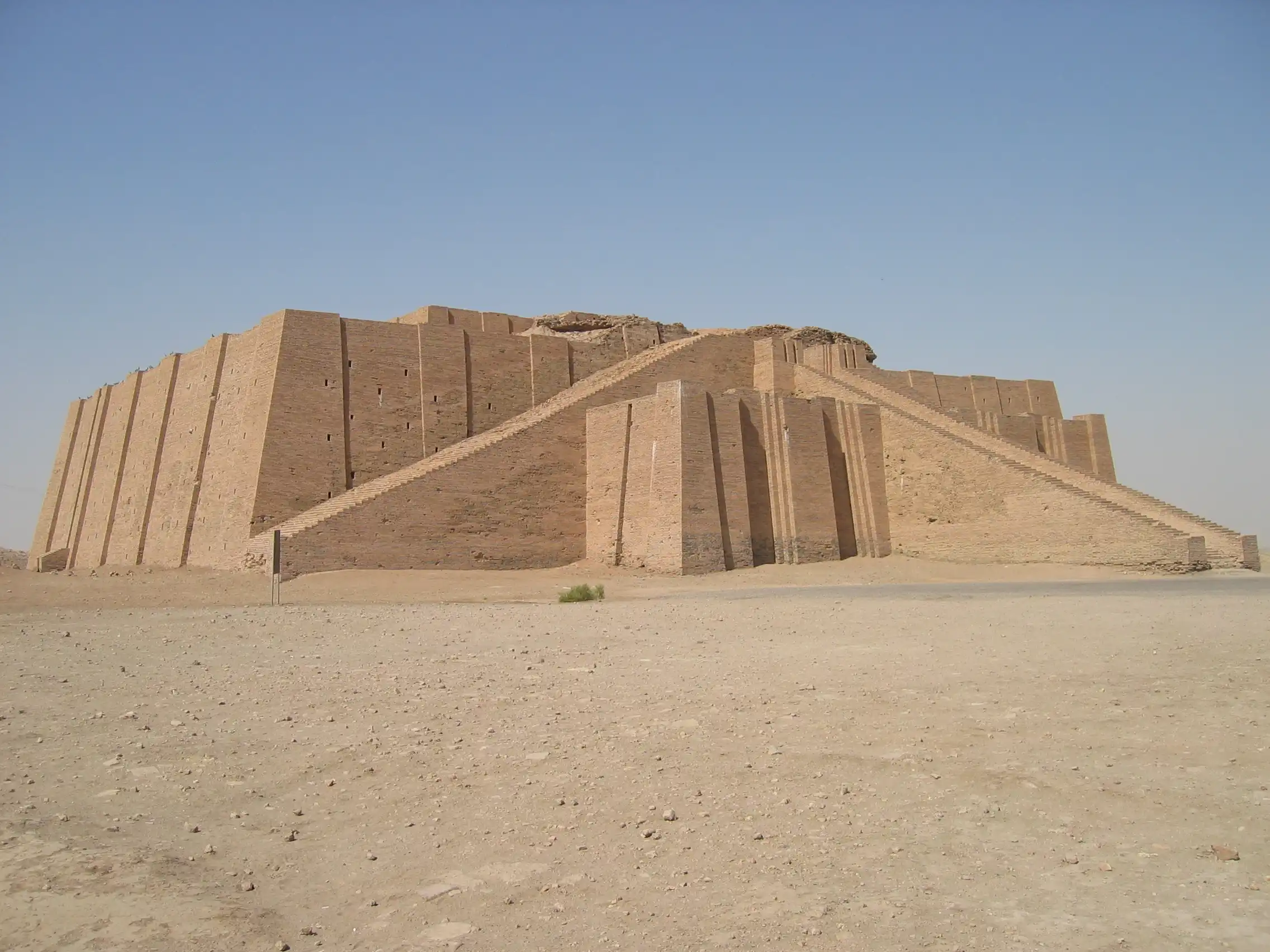
Ur, one of the ancient cities of southern Mesopotamia, is located in the present-day Zi Qar province of Iraq, close to the Persian Gulf. Built around 3800 BC, Ur was an influential city that served as a cultural and religious center among the Sumerian states. One of the most powerful city-states during the Sumerian and Akkadian periods, Ur was famous for its ziggurats, as were other Sumerian states. The Ziggurat of Ur, a massive step pyramid dedicated to the Moon God Nanna, is one of the largest temples of Mesopotamia.
Between 1922 and 1934, British archaeologist Sir Leonard Woolley led excavations at Ur, uncovering 35,000 artifacts, including mass graves that provided insight into the city’s socio-cultural life. One of the oldest cemeteries in Mesopotamia was found here, and many royal tombs were discovered. Ur remained significant until around 500 BC, but under Persian and Babylonian rule, the city gradually declined in size and influence.
Skara Brae
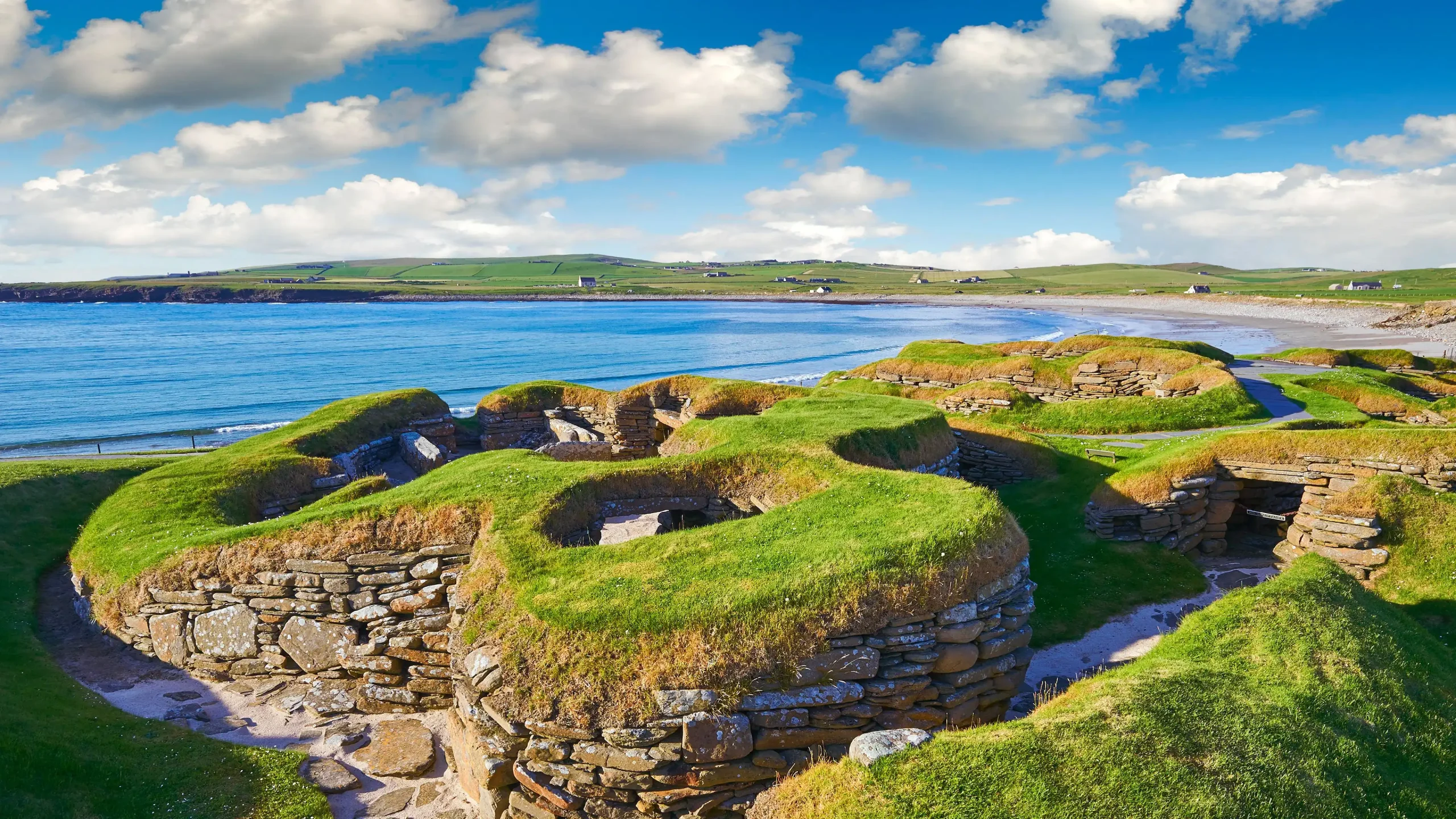
Skara Brae, located in the Orkney Islands, Scotland, is one of the world’s oldest known settlements, dating back to 3180–2500 BC. The city, a Neolithic settlement, has the best-preserved building complex in the region from that period. Excavations began in 1868 in the city, which emerged from under the sands after a major storm in 1850. The city’s structures have survived to the present day in good condition thanks to the layer of sand covering the settlement. In 1999, Skara Brae was registered as a UNESCO World Heritage Site as part of the Heart of Neolithic Orkney, along with Maes Howe, a large chambered tomb, and two ceremonial stone circles, the Stennes Stones and the Ring of Brodgar.
Originally an inland village on the edge of a freshwater lake, all the houses in Skara Brae were built from flat stone slabs, placed in large piles on a rubbish heap, and connected to each other by covered passages. The eight houses, which are close to each other connected by stone passages and partially covered with soil, are thus protected from bad weather conditions. Each dwelling had a single-room layout of approximately 40 m², featuring built-in stone furniture, including a dresser for storing or displaying objects, box beds, a central hearth, and small tanks set into the floor, possibly used for preparing fish bait. It is thought that the people left the village in 2500 BC due to reasons such as rising sea levels and storms.
Çayönü

One of the oldest settlements where hunter-gatherer societies settled and transitioned, Çayönü is located near the Ergani district of Diyarbakır province in Turkey today. This Neolithic settlement area, dating back to 10200 BC, began to shed light on history as a result of excavations initiated in 1964.
The excavations revealed that Çayönü is one of the earliest examples of planned architecture, with buildings and the first stone-based mudbrick structures spanning 6,000 years. In the city where the Grid Planned Village Order was used, long-planned structures extending from north to south were built by covering the foundations with stone or clay and covering them with reeds and covers.
The houses were generally 35 m² in size and were divided into three sections: a northern section with stone flooring, a central section with a hearth, and a southern section used for various purposes. The covered mud beneath the buildings ensured continuous airflow, protecting them from the effects of humidity. In Çayönü house models, the roofs are supported by special lifts to help the walls. The material of the flat roofs in all house models is adobe and is approximately 30-80 cm thick. A special type of structure for common use that can be called public buildings has emerged in Çayönü.
These structures are buildings that are open to collective use with one or more functions, built differently from houses. It can be said that the transition to settled life brought about social cohesion and classification. Excavations in 1991 uncovered 60 layers of structures dating from 10,000 to 5,000 BC, showing the evolution of the settlement. These layers displayed a transition from simple round huts made from branches to stone-based rectangular buildings, revealing the beginnings and development of village architecture over time.
If you are interested in developments in architecture, join PAACADEMY. By joining PAACADEMY’s workshops, you can master advanced parametric design tools from leading industry experts, learn how to integrate artificial intelligence into design workflows, and leverage computational design in architecture.
Jiahu

Jiahu, a Neolithic site located near the North Wuyang district of Henan province in Central China, is one of the oldest settlements in the world, dating back to 7000 BC. It is an early example of the transition to settled, agriculture-based life, and the remains found at the site indicate the presence of a musical culture. Bone flutes made from the tibia of the red-crowned crane found in the area are the oldest known seven-note musical instruments in the world.
While there were a few living and burial areas in the city with a simple scheme in the early phase, the number of houses and graves increased dramatically in the middle-late period. Thus, the spatial expansion of the village and the increase in population were observed. Living and burial areas were separated from each other, and family burial areas and independent public cemeteries were developed.
Homes, initially around 24 m² and consisting of a single room, evolved into larger, multi-room structures through extensions. The houses were generally built close together, with the larger ones placed in more central locations. Over time, Jiahu was abandoned due to reasons such as drought and soil exhaustion as a result of climatic changes.



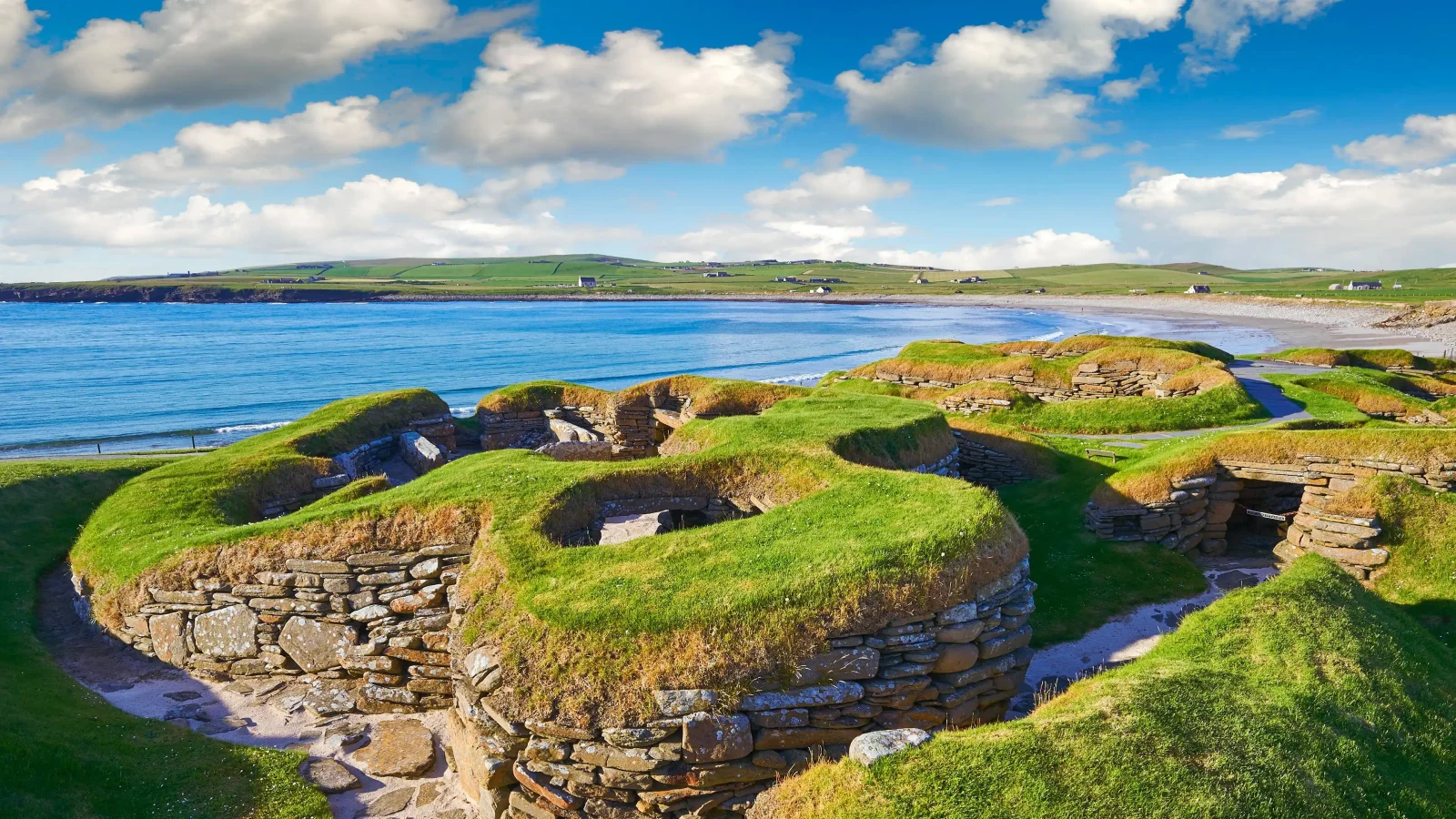






















Leave a comment